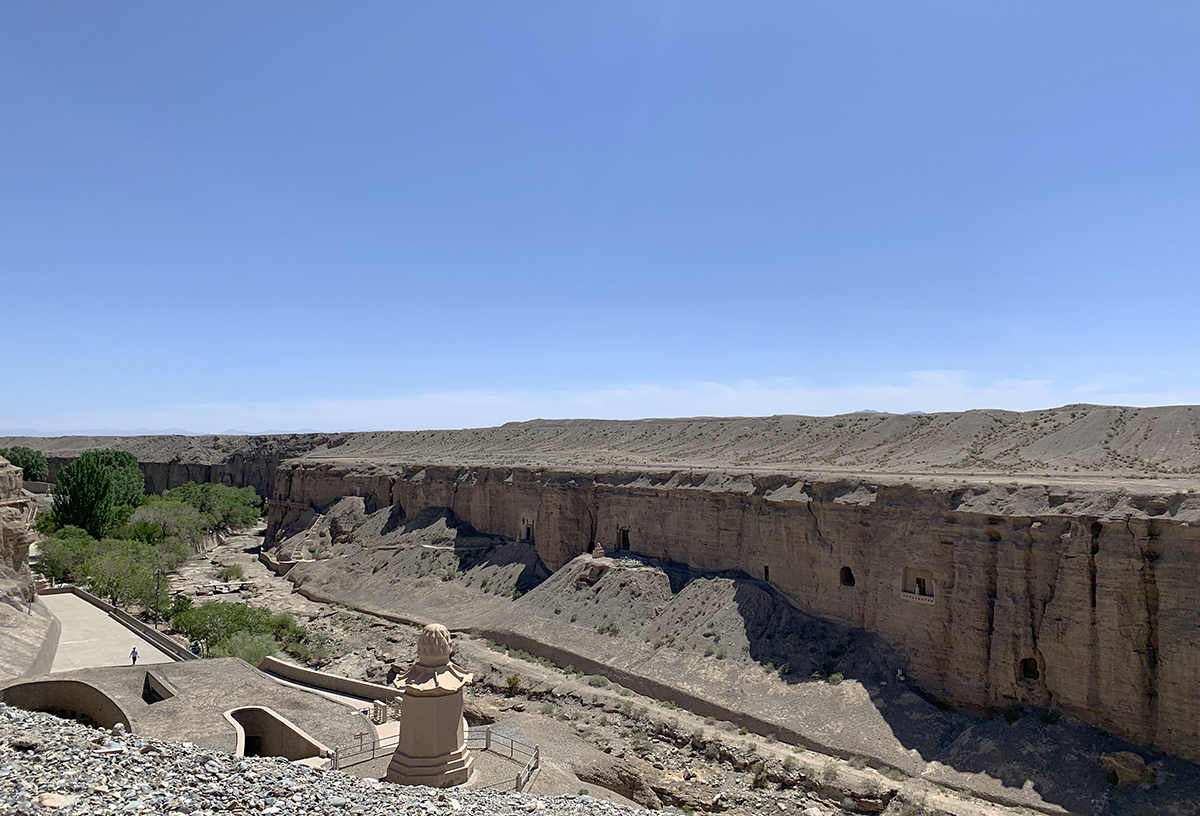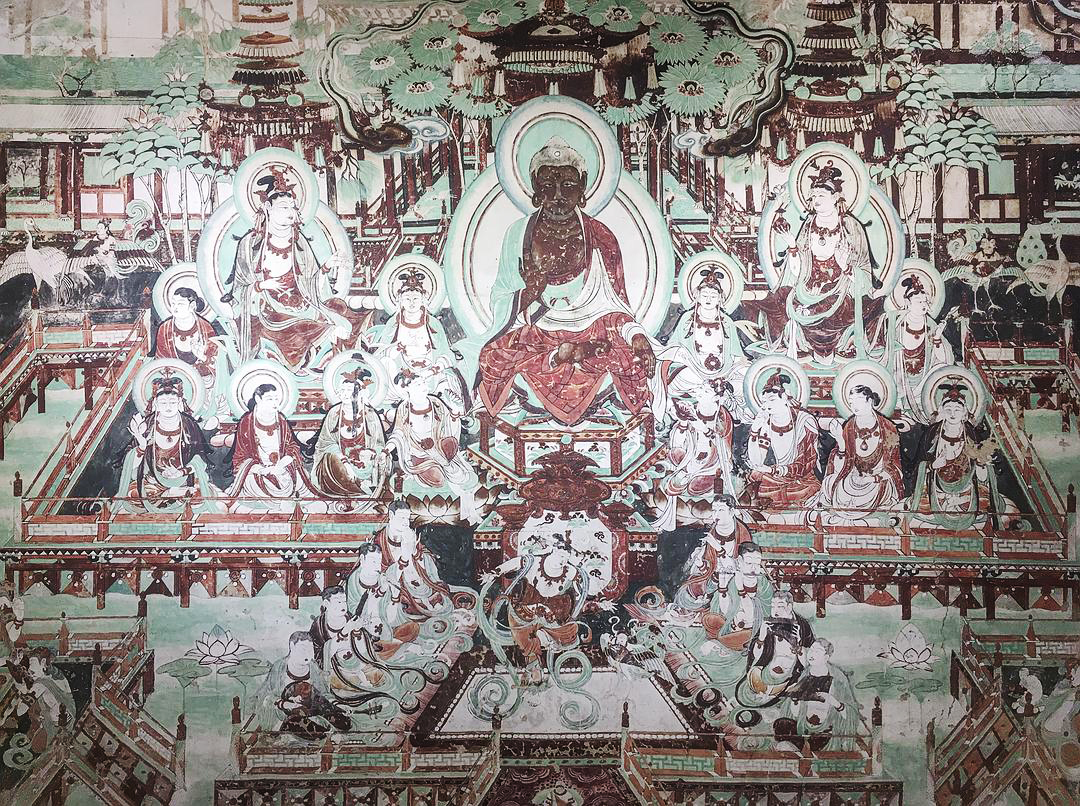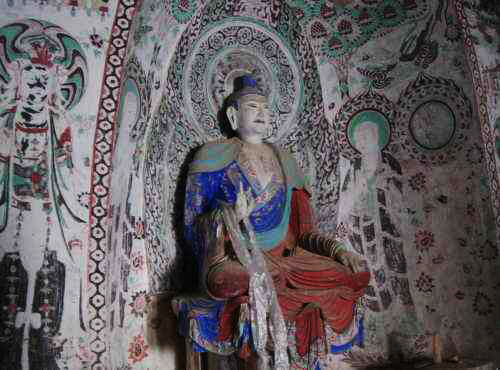
On the shimmering banks of the Yulin River, the cliff-faces on either bank appear to be punctured with a myriad of small holes. Look a little closer, however, and you’ll discover that these small holes are filled with some of the most beautiful works of Buddhist art in China! The Yulin Grottoes, also known as the Valley of Ten Thousand Buddhas, are a collection of 42 hand-carved caves that contain over 250 Buddhist statues and a staggering 4,200 square metres (45,208 sq. ft.) of colourful murals. The name “yulin” (榆林) or “elm tree” is derived from the jade-hued elm trees that line the bank of the river, which endow the area with a picturesque beauty. It is easy to see how this verdant place inspired Buddhist monks to produce such magnificent works of art. This grotto complex is intimately connected to the nearby Mogao Caves, which have been heralded as one of the Four Grand Groups of Grottoes in China. The Yulin Grottoes may not have earned a fancy title, but they are certainly no less magnificent!
The first few caves were initially carved during the Northern Wei Dynasty (386-535 AD), but the complex was renovated and added to right up until the Qing Dynasty (1644-1912). Arguably the grottoes most unique feature is that it contains grottoes that were constructed during the Western Xia Dynasty (1038–1227), in particular grottoes number 2 and 3. Historians know very little about this mysterious empire, which was ruled by an ethnic group known as the Tanguts. The scenes depicted in these grottoes provide an unparalleled insight into what Tangut culture was like and have given historians invaluable examples of the Tangut language, which is related to the language of the Qiang ethnic minority. While their language may resemble that of the Qiang ethnic minority, the Tanguts actually belonged to a Turkic ethnic group known as the Xianbei, who occupied large parts of north and northwestern China. In fact, the Xianbei people had originally spoken a Turkic language, but adopted the Qiangic language after conquering and absorbing several Qiang tribes. You could argue that it was one of the earliest examples of cultural appropriation!

What makes these grottoes still more exceptional is that, alongside scenes of Buddhist significance, the murals within some of the grottoes contain secular images, such as tableaus of people making wine, playing musical instruments, dancing, milking cows, playing games, or getting married. Within these scenes, you can witness the traditional dress of several ethnic groups who inhabited this region throughout Chinese history. According to archaeologists, these spectacular murals would have been painted using brushes made from rabbit’s hair and the deep richness of colour would have been achieved by grinding valuable minerals, such as red ochre, cinnabar, and lapis lazuli.

In terms of layout, each cave is typically formed of an entrance corridor, an antechamber, and a main chamber. The 25th grotto, which was originally constructed during the Tang Dynasty (618-907 AD), is perhaps the most famous and emblematic among the many splendid caves within the grotto complex. It is distinctly Tibetan in terms of art style and it contains a vivid mural that depicts eight different bodhisattvas within the Buddhist canon, including the Vairocana Buddha, Maitreya (the Laughing Buddha), and Manjusri Bodhisattva. In the 29th grotto, there is a breath-taking mural depicting the pilgrimage that the monk Xuanzang took to acquire Buddhist scriptures, while the 2nd grotto is home to a similarly stunning mural of Guanyin, the Buddhist goddess of mercy, sitting calmly atop Luojia Mountain. On the east wall of the 3rd grotto, a mural depicting the One-Thousand-Armed Guanyin demonstrates the level of scientific development that had occurred at the time of its painting, since Guanyin is shown holding a variety of advanced tools in her many hands. While the grottoes’ artistic value is undeniable, they have also been integral to mapping out the history of the region and understanding the complexities of multi-ethnic life in this remote region of China.